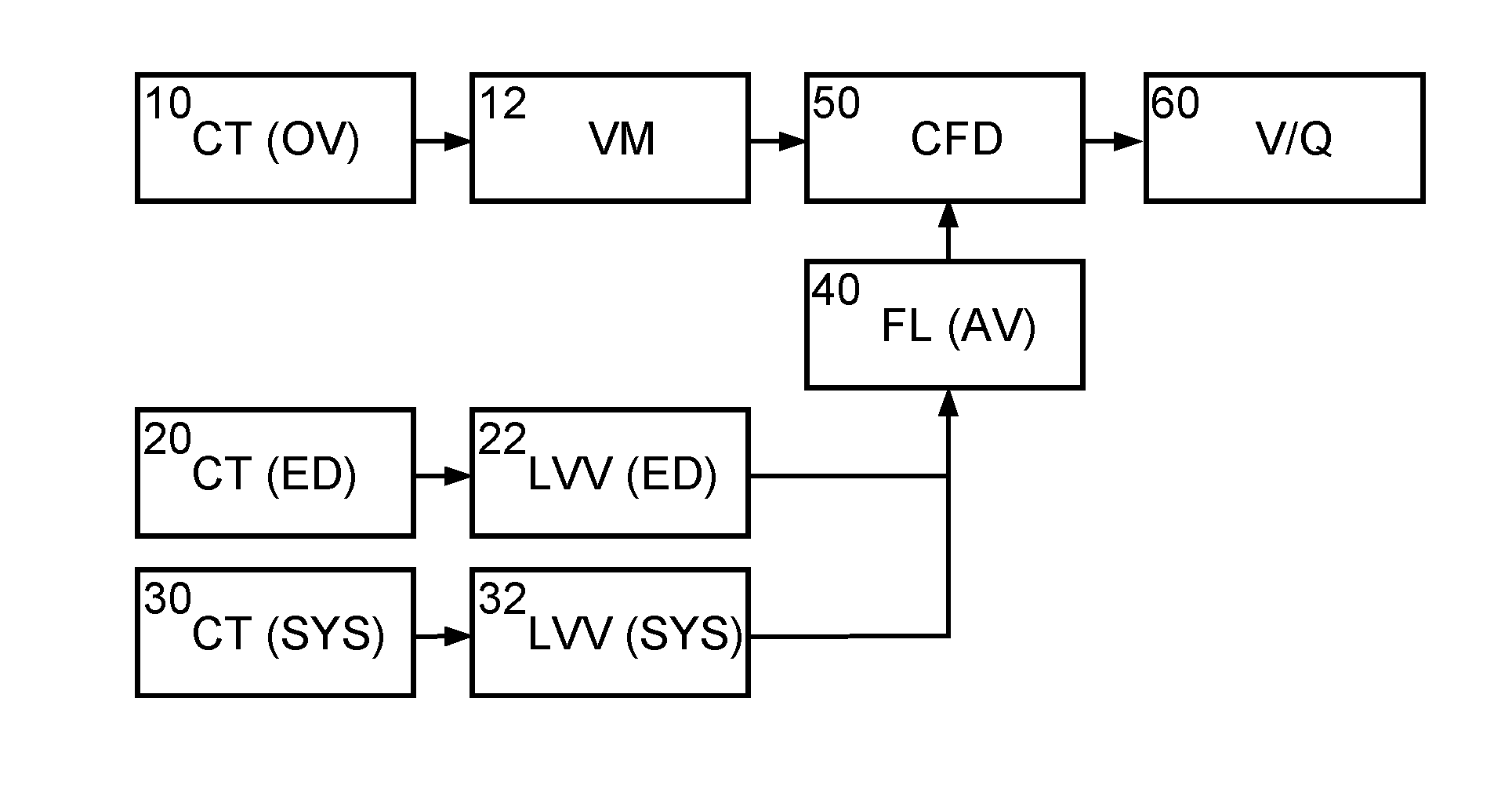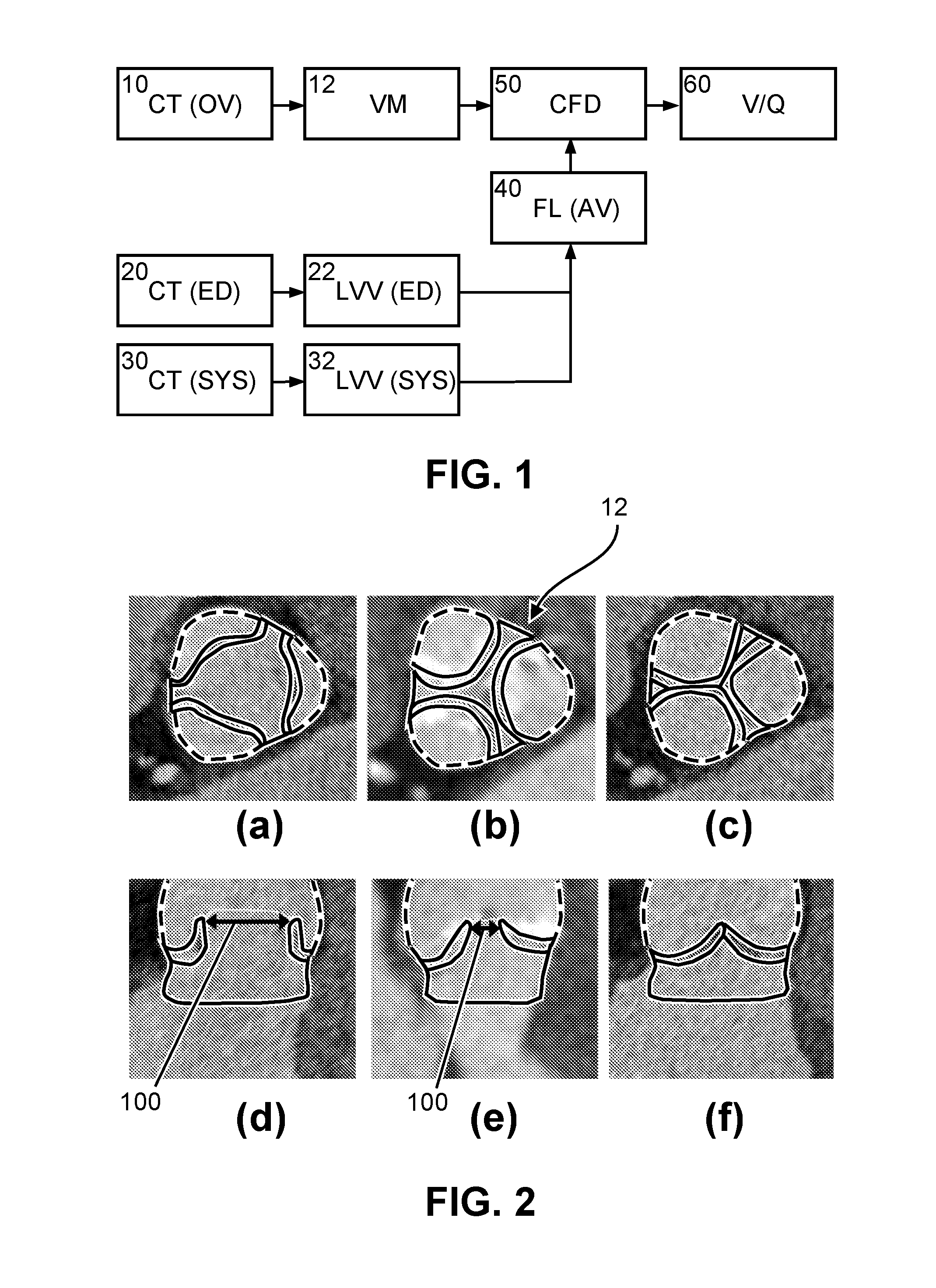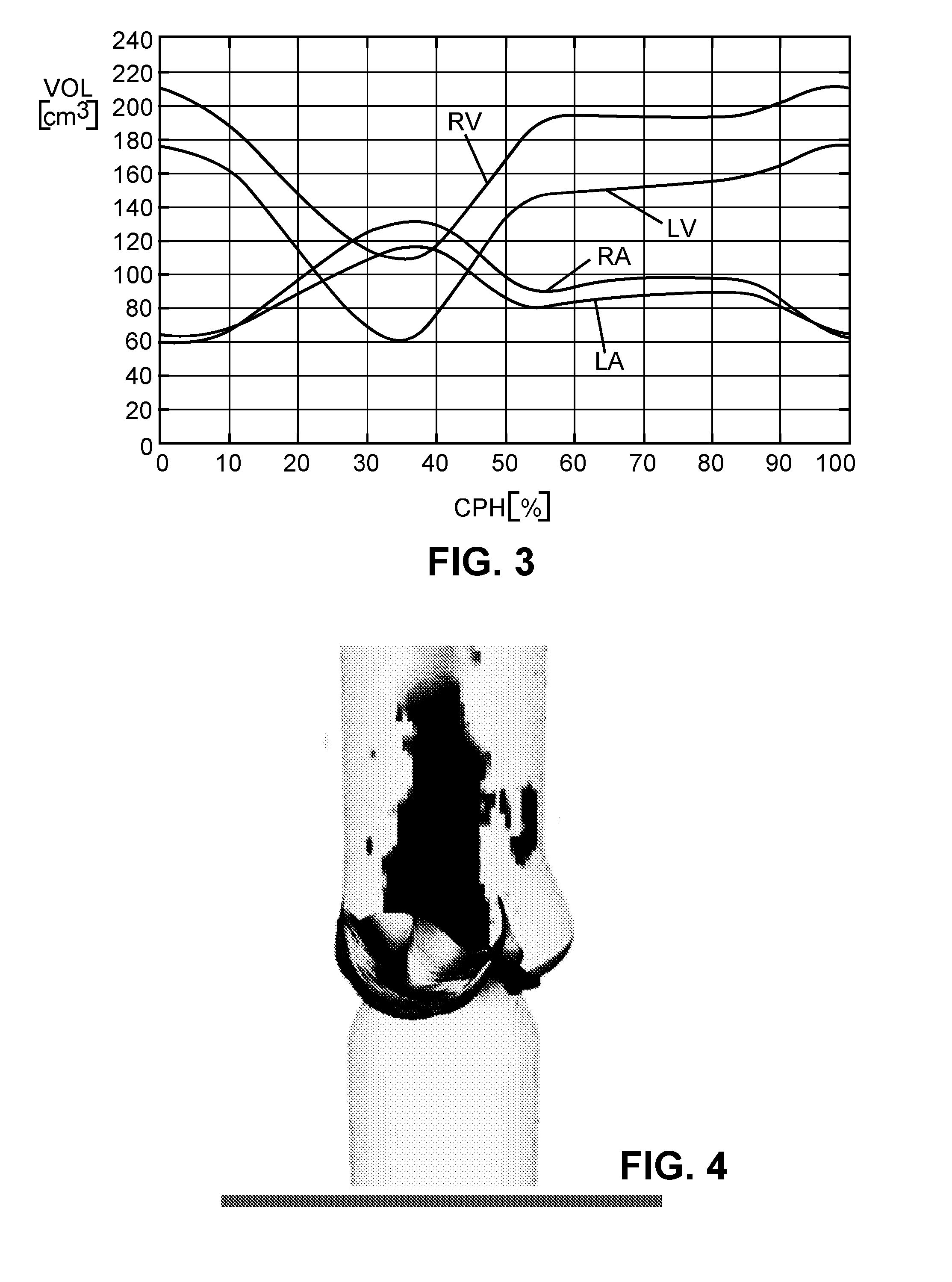Method and apparatus for simulating blood flow under patient-specific boundary conditions derived from an estimated cardiac ejection output
a technology of blood flow and boundary conditions, applied in the field of simulation of blood flow, can solve the problem that the impact of three-dimensional (3d) blood flow cannot be fully assessed by such 2d measurements, and achieve the effect of facilitating process automation
- Summary
- Abstract
- Description
- Claims
- Application Information
AI Technical Summary
Benefits of technology
Problems solved by technology
Method used
Image
Examples
Embodiment Construction
[0020]Embodiments are now described based on a simulation of the blood flow through a patient-specific geometry of a left ventricle (LV) outflow tract plus ascending aorta (as an example for a blood cavity or cardiovascular structure close to the heart) under patient-specific boundary conditions derived from the cardiac ejection output per heart stroke, which blood volume can be calculated from (at least) two images of the LV in maximum and minimum filling state (e.g., end of diastole, end of systole). The geometry of the LV outflow tract, the aortic root including the AV, plus ascending aorta and the ventricle volumes can automatically be obtained by model-based segmentation.
[0021]FIG. 1 shows a schematic block diagram illustrating the generation and use of patient-specific boundary conditions for simulating the flow through the aortic valve. The blocks of FIG. 1 can be regarded as hardware circuits adapted to perform the respective function or as steps of a corresponding method or...
PUM
 Login to View More
Login to View More Abstract
Description
Claims
Application Information
 Login to View More
Login to View More - R&D
- Intellectual Property
- Life Sciences
- Materials
- Tech Scout
- Unparalleled Data Quality
- Higher Quality Content
- 60% Fewer Hallucinations
Browse by: Latest US Patents, China's latest patents, Technical Efficacy Thesaurus, Application Domain, Technology Topic, Popular Technical Reports.
© 2025 PatSnap. All rights reserved.Legal|Privacy policy|Modern Slavery Act Transparency Statement|Sitemap|About US| Contact US: help@patsnap.com



